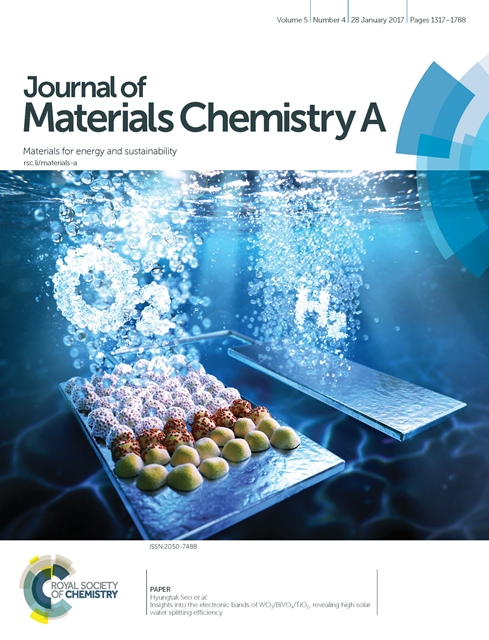- About Ajou
- Admission
- Academics
- Research
-
International
International
- Campus Life
-
News and Event
News and Event
-
AUT
AUT
Ajou News
NEW [17.1.25] Ajou's Professor Hyung Tak Seo develops a highly efficient and stable photocatalytic electrode
- 2017-03-20
- 22951

Ajou University Professor Hyung Tak Seo (Department of Energy System Research and Department of Materials Science and Engineering, pictured above) developed a highly efficient and stable photocatalytic electrode. The research findings were published as the inside cover in the January 28th issue of The Journal of Materials Chemistry A.
Releasing only water after being used, hydrogen is a clean next-generation source of energy and is increasingly being utilized across industries. While hydrogen is mostly produced by reforming fossil fuels, studies on photoelectrochemical water splitting technologies are being actively conducted to replace the fossil fuel method. A key to this technology is to produce water splitting photoelectrodes by utilizing charges generated from sunlight. The problem, however, is the fact that stability and efficiency are hard to achieve at the same time because high optical conversion efficiency leads to early corrosion and high stability lowers optical conversion efficiency.
The latest photocatalytic electrode developed by Professor Seo and his team has a tandem structure in which three different nanostructures and membranes are built and a single electrode directly responds to sunlight. This is completely different from the previous approaches that separate solar cells from catalytic electrodes or use multiple photoelectrode plates. The new photoelectrode consists of a photosorption oxide nano plate that creates electron holes (positive charges) and electrons (negative charges), an oxide nano particle that promotes the separation of charges to encourage their movement to opposite electrodes, and a protective membrane that prevents photocorrosion and allows high-energy electron holes to pass through the surface.
The photoelectrodes helped sunlight-generated electrons to be divided into anodes and cathodes without any damage, efficiently generating hydrogen from water. The photoelectric current, a standard of water photoelectrolysis efficiency, was found to be world-class for single tandem-structure electrodes in the latest development. In addition, hydrogen generation efficiency was confirmed to remain stable at 95 percent for 24 hours in a photocurrent measurement and a gas chromatographic analysis.
Professor Seo also developed a process that fully covers an ultrathin (five-nanometer) TiO2 protective membrane without any space by using electrodeposition technology. Compared to the process without any protective membrane, photoefficiency and optical conversion efficiency improved more than 25 and 16 percent, respectively.
Professor Seo said, "It is very rare to develop a tandem photocatalytic electrode that has both high optical conversion efficiency and stable photo-reaction," adding, "If you use a promoter to enhance catalyst reactions, hydrogen can be generated even more efficiently through water splitting, which can be applied to photochemical reactions of other materials such as methanolysis."
The research was conducted with support for advanced researchers from the National Research Foundation of Korea, the C1 Gas Refinery Project, and the BK Plus Project.

< The research findings of Professor Hyung Tak Seo are pictured above in the inside cover of The Journal of Materials Chemistry A. >
